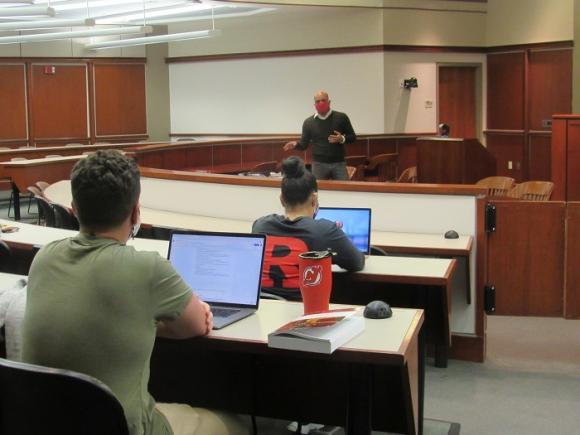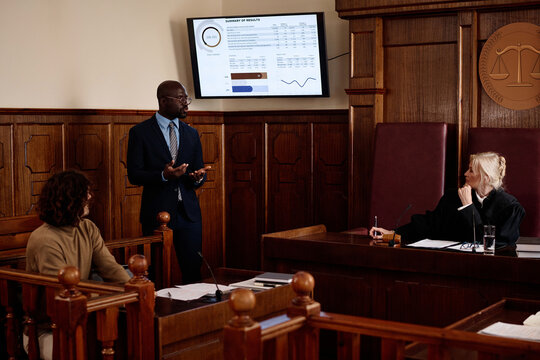Exactly how to Improve Your Instance with Engaging Trial Presentations: Specialist Tips for Attorney
Exactly how to Improve Your Instance with Engaging Trial Presentations: Specialist Tips for Attorney
Blog Article
Browsing the Complexities of Trial Presentations: Tips for Seamless Delivery and Engaging Arguments
In the realm of lawful process, the art of trial presentation stands as a critical factor of success. As attorneys browse the intricate internet of courtroom characteristics, the capability to perfectly supply disagreements and proof while captivating the court's attention ends up being paramount. The intricacies inherent in trial discussions need a fragile balance of finesse, skill, and method. By sharpening techniques that make sure a polished delivery and crafting compelling disagreements that reverberate with the audience, legal specialists can significantly improve their campaigning for. In a globe where persuasion rules supreme, mastering the ins and outs of test discussions is not merely a choice however a need for those looking for to prevail in the courtroom.

Recognizing Trial Goals
To efficiently browse a test, it is crucial to have a clear understanding of the objectives that need to be accomplished. Prior to tipping right into the courtroom, legal teams should define their objectives and wanted end results. These purposes act as guiding principles throughout the trial, forming strategies and influencing decision-making processes.
Understanding trial objectives involves an extensive analysis of the situation, legal precedents, and the client's finest rate of interests. Trial Presentations. It needs a thorough exam of the realities, recognizing vital concerns, and preparing for prospective difficulties. By setting particular and measurable goals, lawyers can customize their debates and discussions to align with the wanted outcomes
Additionally, a clear understanding of test purposes allows legal teams to focus on proof, witnesses, and legal arguments properly. It permits the advancement of a coherent story that reverberates with the discretionary, strengthening the overall instance presentation.

Organizing Proof Properly
Having a clear understanding of test objectives lays the structure for arranging evidence properly in lawful proceedings. By straightening the presentation of proof with the desired end results of the trial, lawful teams can reinforce their disagreements and improve their persuasiveness.
An additional secret element in arranging proof successfully is developing a rational circulation. Presenting proof in a coherent and consecutive manner can assist construct a compelling story that sustains the legal disagreements being made. Additionally, utilizing aesthetic aids such as graphs, timelines, or charts can even more improve the company of evidence and help in making clear complex connections or series of occasions.
In addition, making sure that all proof presented is pertinent and admissible to the case is essential. Unimportant or inadmissible proof can interfere with the stamina of the debate and possibly harm the trustworthiness of the here and now event. Therefore, a precise evaluation and choice procedure need to be taken on to consist of only the most legitimately audio and impactful proof in the trial presentation.
Crafting Convincing Narratives
Crafting compelling narratives plays a critical role in providing convincing debates throughout lawful process. A well-crafted story has the power to astound the target market, stimulate emotions, and eventually persuade the choice in support of the here and now event. When creating a story for a test discussion, it is necessary to develop a clear story that highlights bottom lines and links them in a meaningful way. Begin by detailing the truths of the situation in a compelling manner, ensuring that the sequence of occasions is very easy to comply with. Introduce characters effectively, providing history details that assists the target market comprehend their inspirations and actions. Additionally, integrating dazzling descriptions and appealing language can bring the narrative to life, making it a lot more remarkable for the discretionary. By weaving with each other evidence, testimony, and legal debates right into a natural and convincing story, attorneys can properly support for their customers and enhance the chance of a positive result in the court room.
Grasping Aesthetic Help
Effective use aesthetic aids is essential to boosting the effect and clearness of trial discussions. Visual aids, when made use of strategically, have the power to streamline complex details, strengthen bottom lines, and leave a long lasting perception on the discretionary. To master visual aids in test discussions, it is crucial to guarantee that they are clear, succinct, and pertinent to the debates being made.
When incorporating visual aids, such as graphes, pictures, graphs, or timelines, into a test discussion, it is vital to maintain them aesthetically appealing yet professional. The visuals ought to match the verbal arguments, offering a graph of the information being gone over without overwhelming the target market with unnecessary information.
Moreover, exercising with the visual help ahead of time is crucial to make sure a seamless distribution throughout the test. Acquainting oneself with the web content, changes, and timings of each visual help can assist maintain the circulation of the discussion and prevent technical glitches that may develop.
Supplying Impactful Closing Debates
An engaging closing argument offers as the culmination of a test presentation, encapsulating helpful hints the core story and convincing the court and jury in the direction of a beneficial choice. Begin by outlining the major arguments that sustain your customer's position, emphasizing why the proof offered throughout the test sustains your narrative.
Furthermore, including psychological allure can even more reinforce your closing argument. By humanizing the situation and attaching on an individual level with the decision-makers, you can stimulate compassion and understanding, influencing their perception of the truths provided. Additionally, restating the lawful requirements that need to be met for a desirable read what he said judgment can strengthen the validity of your position. Eventually, a well-crafted closing disagreement should leave a long-term perception, compelling the discretionary to rule in your customer's favor.
Final Thought
In conclusion, grasping trial discussions includes recognizing objectives, arranging proof, crafting stories, using aesthetic aids, and providing impactful closing disagreements. By carrying out these techniques successfully, attorneys can offer their instance seamlessly and make compelling disagreements in the courtroom. It is critical to navigate the intricacies of test presentations with accuracy and skill to attain success in lawful process.
By straightening the discussion of proof with the preferred outcomes of the trial, lawful teams can enhance their arguments and improve their persuasiveness (Trial Presentations). To grasp aesthetic aids in test discussions, it is important to make sure that they are clear, concise, and appropriate to the arguments being made
A compelling closing argument offers as the end result of a trial presentation, enveloping the core narrative and encouraging the court and jury in the direction of a desirable decision. Begin by laying out the major disagreements that sustain your client's position, stressing why the evidence provided throughout the her response trial sustains your narrative.In verdict, understanding test presentations entails comprehending goals, arranging evidence, crafting stories, using visual help, and supplying impactful closing arguments.
Report this page